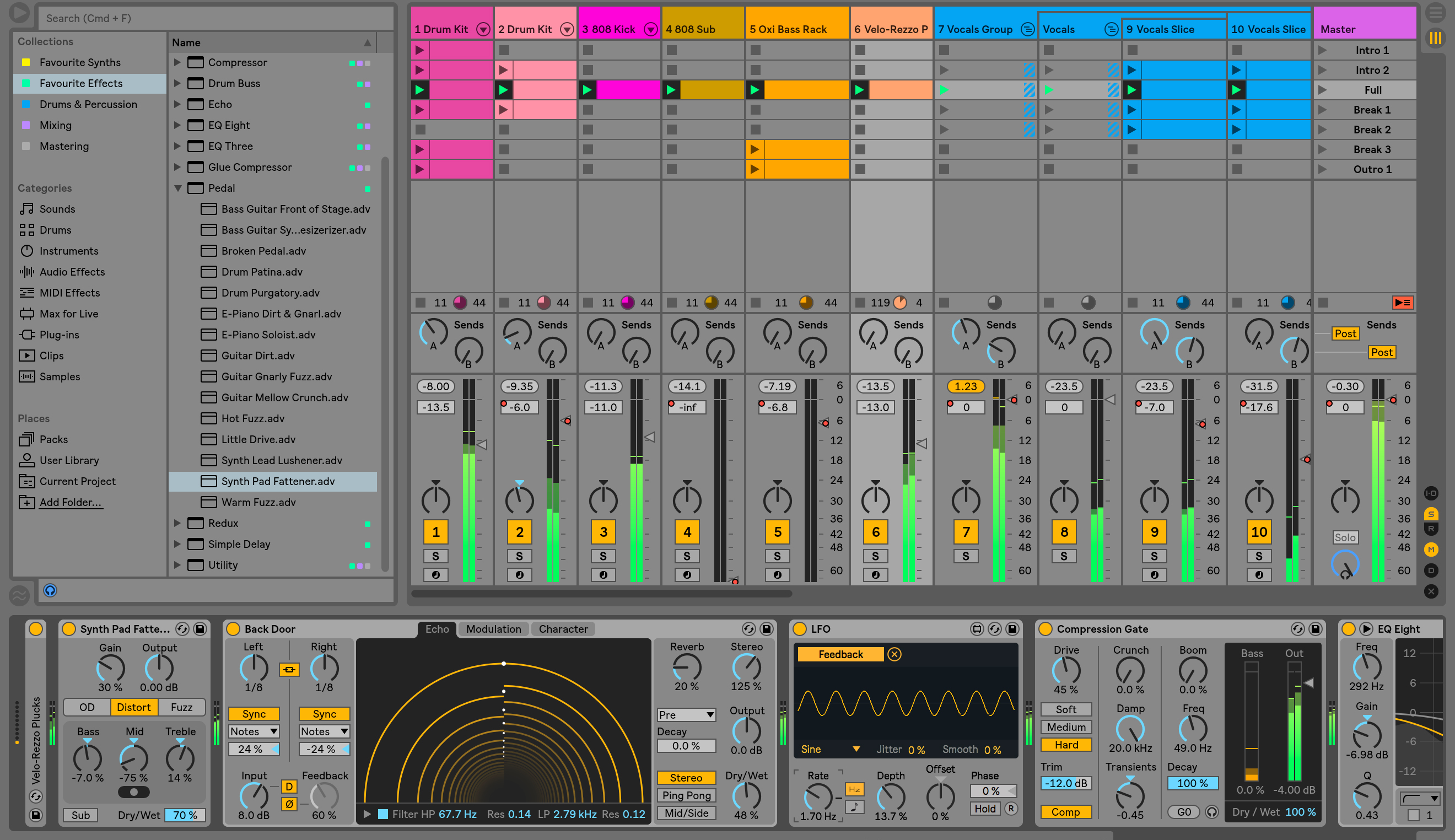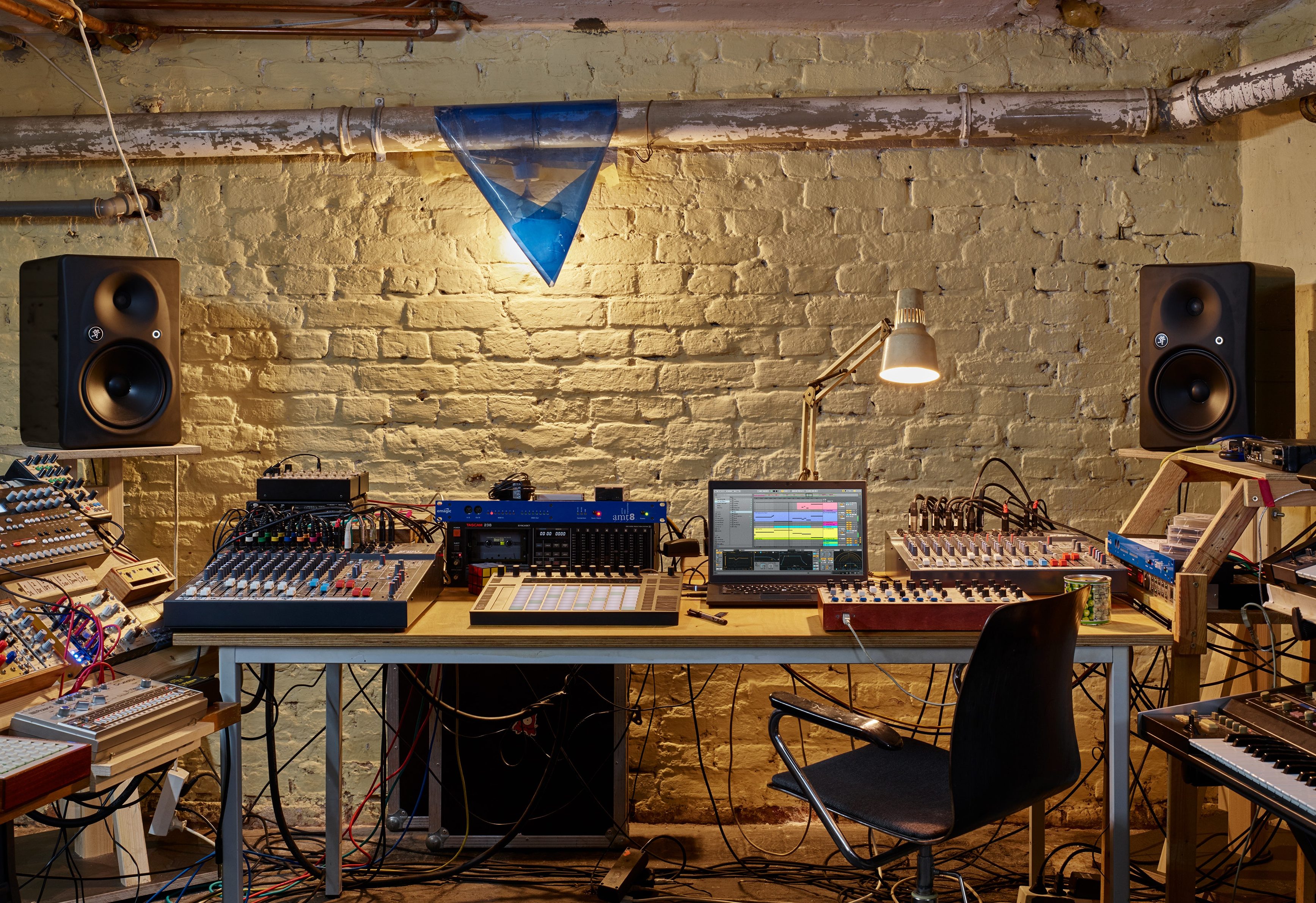Malaysia-based German DJ-Producer CEE Finds His Way Through LIVE
 Thirsty for JUICE content? Quench your cravings on our Instagram, TikTok and WhatsApp
Thirsty for JUICE content? Quench your cravings on our Instagram, TikTok and WhatsApp
German producer CEE – who is practically a Malaysian figure by now – is a staunch loyalist of Ableton, having used their products for as long as he could remember. With the advent of the latest upgrade to its workstation Live, which comes out some time early this year – 5 years since the release of version 9 – CEE was honoured as one of the first to be given the opportunity to try out Live 10.
Here’s what he’s got to say.
Ableton is about to launch their latest offering, Live 10, and being a musician who also happens to be a staunch loyalist of the brand, it’s about time for me to praise the software (Live and Link) & hardware (Push) maker for allowing my creativity to burst out with potency through their products. So, let me give you some insights on how I’d come up with initial ideas using both Live and Link – and staying playful and curious musically while still in charge of the creative outcome. And yeah, no, you’re not gonna find out how I actually find my way through life in this little piece.

The flow
To me, it’s always interesting to see how others would work with identical tools I, too, have in front of me, but come up with very different yet beautiful things. That is of course how it should be when we are dealing with creative tools. Just because two painters might choose to use oil paint on canvas, that doesn’t mean they will both make identical art. In that regard, Ableton Live is just an empty piece of paper and in my eyes, the biggest improvements with Live 10 all deal with the fact that things should stay this way: The paper becomes more empty and the pencils more pointy.
In real talk: Ableton has drastically refined the workflow, allowing the musicians to stay in that precious flow state of mind much deeper. Can you get even realer, you ask? One big workflow jump is Capture, a new feature that “recalls an idea after it has been played and turns it into a MIDI clip with feel and groove intact.” This means you could just jam away, not press record, but still won’t lose anything. It helps people with record button fatigue – you know, those cats who prefer to jam away in their streams of consciousness as opposed to write their music on paper.
This also means when you start a new project, you don’t have to straight away tap in the preferred BPM and then record. Just jam away – the BPM will set automatically according to your groove. A very flow state of mind-kinda thing, I feel. It’s more playful and spontaneous. Which brings me to some of my favourite newly introduced Push upgrades: MIDI-editing on the unit display becomes easier, because MIDI notes can now be displayed on Push’s not-so-little screen on the top. Devices like Echo, EQ Eight, Compressor, and the brand new synth Wavetable have gotten beautiful visualisations on the screen as well. A new step-sequencing layout makes programming much easier on Push too.
Watch this Live 10 intro video to see a breakdown of more newly introduced features before I go deeper into how this helped my quest to find my sound:
The dirt
What really struck me in playing around with Live 10 is the amount of dirt, crunch, and sound uniqueness I got out of the new devices like Wavetable, Pedal, Echo, or Drum Buss. It’s one thing to find your way through a software, but it’s another to find your unique sound. That’s what we are all after, isn’t it? Even when I just grabbed a standard 909 drum kit, I was super happy with what the above mentioned Drum Buss delivers, an “all-in-one drum sculpting tool for adding warmth, adjusting transient response, injecting low end and more.” Tuning my low ends got easy – controlling the decay and amount of these low ends were great and the crunch was real due to warm distortion and adjustment of the transients.
Same feel I got from using Pedal or Echo for the first time. Pedal gives me a great and simple tool to distort and enhance my keys with tasteful warmth and grit. Echo is a delay with beautiful response, depth, and dirty feedback/frequency possibilities. Wavetable is a new ‘wavetable’ synth that uses waveforms from analogue synths and other instruments to create and modulate sounds. Modulation is a big topic for this beast. The combination of all of the above mentioned together is pure filth (do I need to mention that I mean this in a good way?).

Max who?
Max for Live – where do I start? Max is made by Cycling ’74. Earlier last year, Ableton acquired the company. Max for Live was already part of the Live Suite package, but not this deeply integrated. Max for Live has received great improvements to its multi-channel audio routing capabilities for surround sound performance, which I totally feel is the future/present. Speaking of the future, it goes without saying that Max is essential in your life because he doesn’t like independence and the freedom to build your own plugins, synths, or just use what others have created in these fields. Just go to maxforlive.com where users contribute to an online library of free Max for Live devices. You can also find premium Max for Live devices at www.ableton.com/en/shop, which you need to pay for.

Miscellaneous
Last but not least, I want to point out that Ableton has updated the sound library quite a bit. Times change, and so do sound aesthetics. What else hit me? When you save a project, the Undo history doesn’t get cleared! Hallelujah.
Aside from what I’ve mentioned, listed below are all the rest of Live 10’s workflow improvements (in Ableton’s words):
- Multiple MIDI clip editing shows the content of two or more clips in one view for better control of the musical relationships in a song.
- Arrangement View improvements such as nudging, time stretching, one-key zooming and drag-and-drop track duplication make editing faster and easier.
- Browser Collections provide at-a-glance access to favourite or most-used musical elements.
- Groups within groups improves Set organization even with lots of tracks and a detailed arrangement—multiple tracks and groups can be folded together for a simple overview.
- Note chasing triggers MIDI notes even if playback starts in the middle—the note doesn’t need to be started from the beginning to hear pads or other sustained notes.
- I/O Renaming lets producers easily select the right routing by labelling Live’s inputs and outputs to match the instruments and hardware in the studio.
Ableton Live 10 is slated for a Q1 2018 release, so keep an eye out on www.ableton.com.
CEE is recently signed to Monkeytown, home to the likes of Modeselektor and Omar Souleyman. CEE’s debut single off the label, ‘Now & Laters (feat. Homeboy Sandman)‘, is out now.
CEE is also a certified Ableton trainer whom you can book classes with by contacting him at [email protected].
Follow CEE on Facebook, Twitter, Instagram, and SoundCloud.

 Get Audio+
Get Audio+ Hot FM
Hot FM Kool 101
Kool 101 Eight FM
Eight FM Fly FM
Fly FM Molek FM
Molek FM
